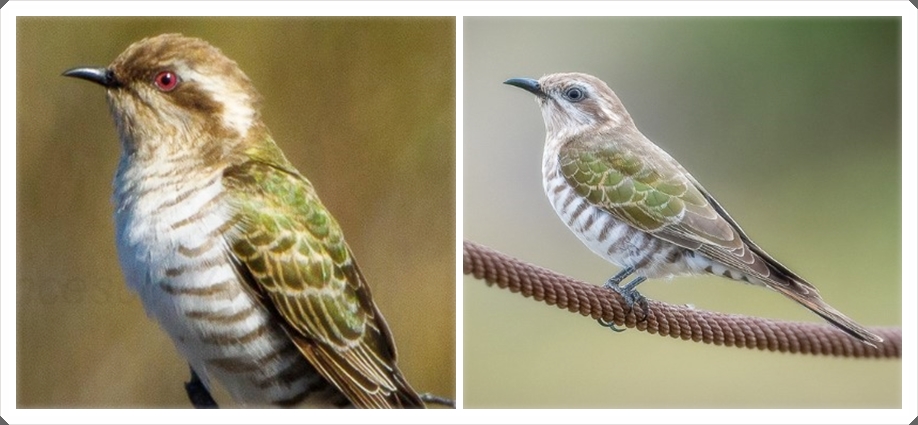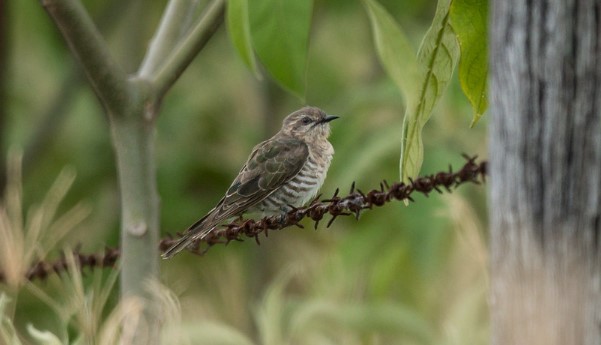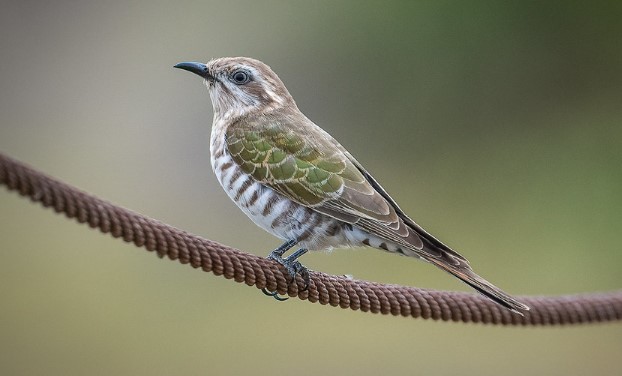Horsfield’s Bronze Cuckoo (Chrysococcyx basalis) announces their arrival to breeding in spring by giving a mournful descending whistle. This lovely whistle is often repeated, and uttered from exposed perches such as high, bare branches, about the arrival of the breeding season.
It is used by males to advertise themselves to potential mates and to announce their territory to them. A noisy but brief display of fast chasing flights in and around bushes, and then returning to a perch, usually begins late in the winter when the birds engage in courtship displays.
Horsfield’s bronze cuckoo is the dullest of all bronze cuckoos. It hunts insects and caterpillars in a variety of habitats, from open woodland to shrub-steppe, and avoids dense forests and thickets. Fairy wrens, thornbills, and gerygones are its main hosts, laying white, red-spotted eggs mimicked by cuckoos.

Eggs laid in robin, flycatcher, chat, and honeyeater nests are less successful. Sometimes the bronze cuckoo damages its nest while lying, resulting in abandonment. It is also similar to most Australian cuckoos, Horsfield’s is a solitary and migratory bird, rarely congregating in small feeding groups, and relocating south in spring to breed, and north in winter, when most but not all reach New Guinea and the Sunda arcs. In some cases, birds stay in the south all year round.
The Rufous-tailed Bronze-Cuckoo and the Narrow-billed Bronze-Cuckoo are some of the names given to this cuckoo. As far as the size of Horsfield’s Bronze Cuckoo is concerned, it typically measures 150-170 millimeters in length.
For identification purposes, the male is brown with a purple-bronze tinge on the head; the back is dull green with a metallic copper-bronze sheen on it. There is a broad cream-white bar concealed beneath the broad buff edge on the wing coverts. There is a metallic sheen on the tail; inner webs have concealed white and dusky barring, and each side of the central feathers has a rich rufous patch.

A white line runs over the eye and down the sides of the neck; a dusky brown stripe runs through the eye. The breast and belly are white on the underparts, with a faint brown band on the sides. The eyes are red. Black is the color of the bill. The feet are grey. Female bird plumage is the same as males while eyes are grey in color.
The back of juveniles is dull brown with a green sheen; the undersurface is light gray with no bars; the belly is white. The immature cuckoo is similar to the adult cuckoo, but with broader buff edges to the wing coverts and duller brown ventral barring. Female eyes are grey; male eyes are pink.
Horsfield’s Bronze Cuckoos make a rather mournful call that descends the scale and is often repeated by the male in advertisements. Nesting and breeding season occurs in July-December. Horsfield’s Bronze Cuckoos lay one egg, usually in their foster parent’s domed nest. There is one pale pink oval egg with small red dots, 18 x 12 mm in size.
Horsfield’s Bronze Cuckoo is found throughout Australia’s woodlands and steppes but avoids thick forests. Disperses inland and northwards during winter as far as New Guinea, the Moluccas, and the Sunda arcs, with the greatest concentrations in southern Australia. No race exists.

